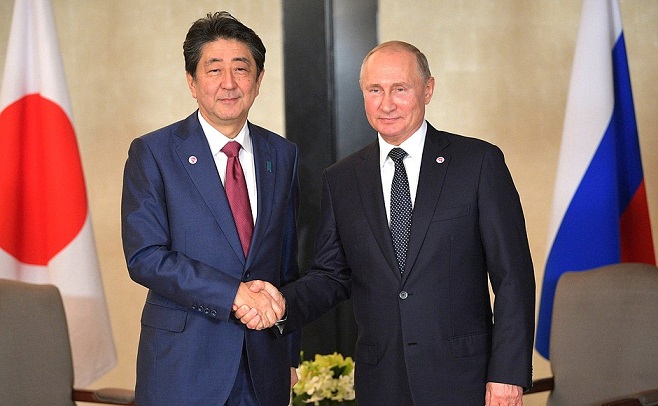22 January 2019 | ANALYSIS
Japanese Prime Minister Shinzo Abe is heading to Moscow in an attempt to resolve the long-standing territorial dispute between Russia and Japan over the Kuril Islands. The islands are located to the North of Japan and to the East of the Russian island of Sakhalin.
Abe is pursuing the transference of two of the islands, Etorfu and Kunashiri – which constitute the vast majority of their population and land mass. In return, he will accept a post war peace treaty with Russia, and also secure a foreign policy legacy by settling the enduring contestation between the two countries.
Previously, Japan have demanded all four islands to be returned, in order to conclude the peace treaty. They currently appear to settling for the return of only two.
There have been protests in Russia, over the desire to maintain ownership of the islands. With a total population of 19,434, the question is why?
The modern dispute originates from Russian victory in World War II, after which, they seized the islands from the defeated Imperial Japan. Earlier in the month Russian Foreign Minister Sergei Lavrov indicated that Japanese acceptance of Russia’s victory in World War II was predicated upon Russian ownership of the islands. This suggests the conflict has as much to do with the symbolism of Russian victory in World War II, and its important place in the Russian collective memory, (the significance of which the Kremlin are keenly aware of) than any material interests that may occur from possession of the islands.
However, as with all foreign policy endeavours – material and strategic interests do play a significant role. Ownership of the islands maintain Russia’s hegemonic position in the Sea of Okhotsk, ensuring Russian territories encircle the entire sea.
This allows Russia to retain naval ports in the sea, and fishing rights many miles off its eastern border. More significantly, since 2011, there has reportedly been 29 zones of possible oil and gas reserves identified on the sea of Okhotsk shelf. There is also a fear that US troops may be deployed on the islands if they are handed over to an American ally in Japan.
A parallel can be drawn between Russia’s insistence of occupying the islands and the annexation of Crimea in 2014. Among the many motivations of a highly complex annexation, was the acquisition of ports in the Black Sea. In both cases, securitising Russian coasts is of Geo-Political strategic interests to Russia.

Conversely, the Japanese have always considered the Islands within their remit and a natural part of their territory. For them, Russian occupation of the islands represents a ceding of sovereignty, as well as the loss of the material interests.
It has been said that it is highly unlikely that Russia will be willing to concede the Islands, despite Abe’s demands for only two of the islands – a Japanese senior official close to Abe has almost all but ruled out the possibility.
Nevertheless, the negotiations will remain of importance – and the outcome will tell us much about the future of Russo-Japanese relations, in which so much has revolved around these islands.
A victory for Abe would represent a loss for Putin, but a show of strength from the Kremlin will demonstrate Russia values its own interests far higher than conciliation with Japan.
Patrick McGovern is a postgraduate student. His interests include Anglo-Russian relations and the politics of the European Union.
















